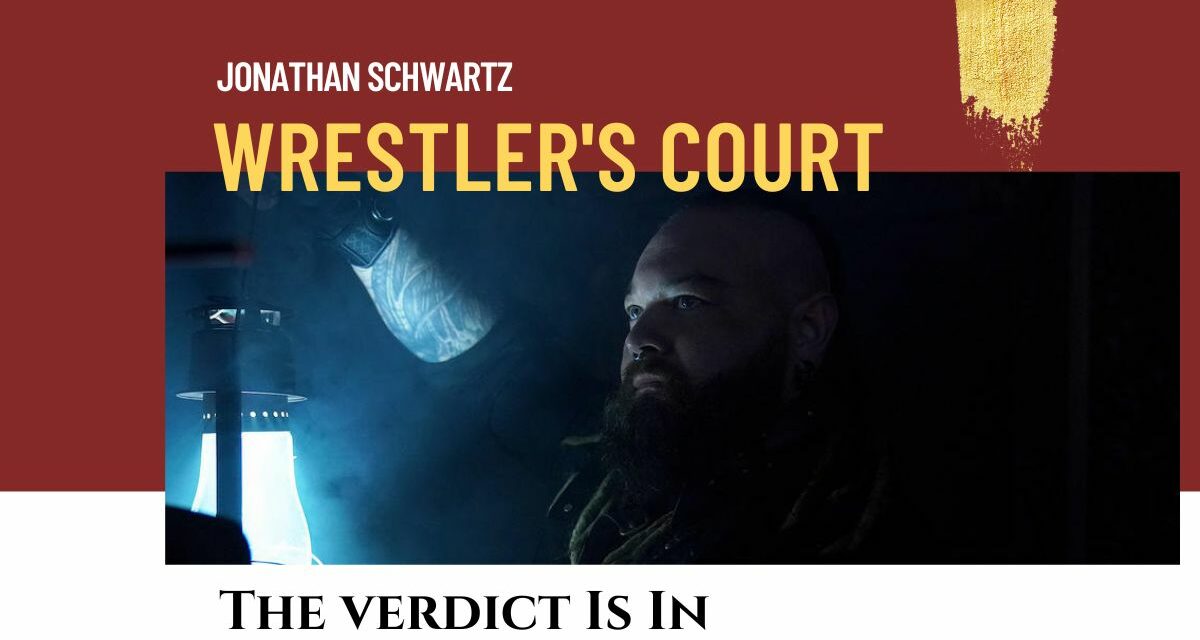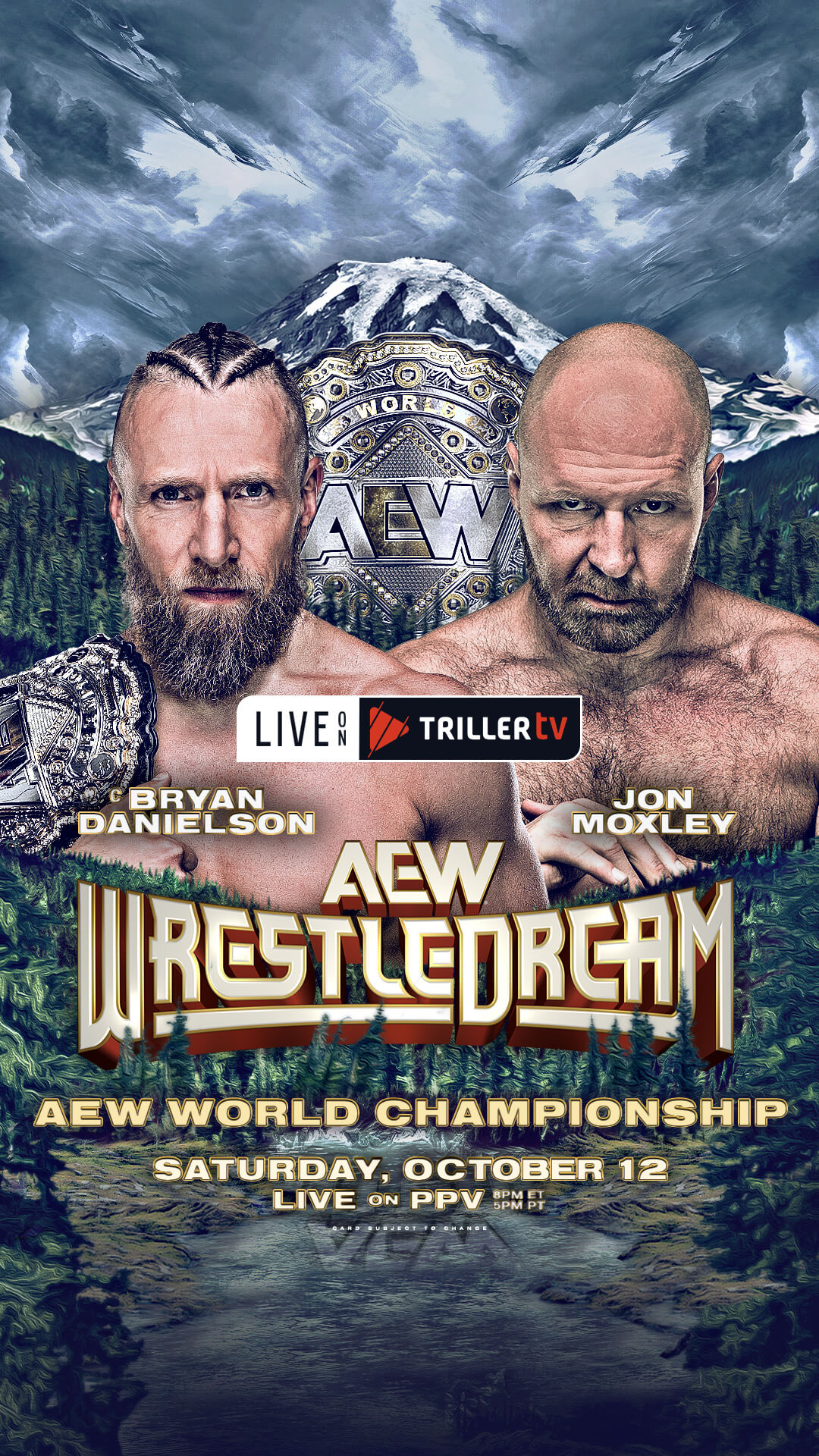On October 8th, Bray Wyatt closed the Extreme Rules pay-per-view, er, premium live event, by returning to WWE. His return was presaged in many ways. It may be the high point of what I like to call a ‘Great Reset’ following the company’s poor treatment of talent during the COVID-19 pandemic and criticism that followed, as well as Vince McMahon’s exit over the summer following allegations of abuse and payoffs to former employees.
Within WWE storylines, Wyatt’s return was teased in September when WWE began playing a haunting a cappella version of the Jefferson Airplane song “White Rabbit” at live events and during television commercial breaks. WWE also began hiding QR codes on screen during broadcasts.
This was an innovative use of viral media since fans would report these events to each other and those with larger online platforms like blogs, podcasts and the website you’re reading right now would amplify the message and speculate as to who it would be. Many of us guessed Bray Wyatt at the outset; while more tech savvy than his previous vignettes, it was still on his creepy brand. Still, names like Alastair/Malakai Black and the recently returned Karrion Kross were floated due to misdirections nested in the campaign. It was great free advertising in any case.
Wyatt emerged live through a light-filled (Forbidden?) door as the TV camera panned across the arena to live-action versions of his Firefly Fun House puppets, plus a “we’ve got the Fiend at home” version of that character. Wyatt donned a new mask, which may represent a new, darker persona known as “Uncle Howdy”. He removed the mask, told us “I’m here” and blew out his electric lantern. Wyatt next appeared on the October 11 episode of Smackdown with a new theme song. He cut a promo that could have been work or shoot or a mixture of the two, before being interrupted by a video of himself in his new mask and a sudden cut off air.
As I write this before the October 21 SmackDown, I look forward to Bray’s next appearance. Like many, I’ve missed him and the chaos his character brings to pro wrestling when unleashed.
Realistically, a WWE return was always in the cards. While Wyatt’s initial cult leader gimmick was decidedly low tech, the Fiend was an outright horror movie complete with makeup, costumes and prosthetics, music and advanced special effects that push the boundaries of normal pro wrestling pyro and ballyhoo. All of this requires a significant financial investment which would be beyond the means of most promoters.
While AEW could arguably pay Wyatt’s freight, it’s not clear that it could do his creative vision justice in a way that would be profitable. AEW has tried going spooky before. The House of Black and early Dark Order both treaded on similar ground. The Dark Order presents an unwelcome eerie challenge given how Wyatt’s former stablemate and real life friend Brodie Lee / Luke Harper was revealed as that outfit’s head. Some fans called for Wyatt to take over the Dark Order following Lee’s untimely death and Wyatt’s release from WWE, but I agree that respecting Lee’s accomplishments meant taking a pass even if the Order has languished ever since. House of Black had the right vibe and Brody King has the makings of a great monster heel, but that group has lacked focus. Leader Malakai Black made a strong debut in a feud against Cody Rhodes, but his House has been in disarray. Great look, tremendous wrestlers, but no focus or compelling storylines to advance the characters. Black and Buddy Matthews are taking time to heal real physical and mental wounds (I still think Matthews should hive off with PAC to form an evil version of the old Killer Bees tag team; maybe they could call themselves the Murder Hornets). Even if the resources are there, it seems like Tony Khan’s attention is elsewhere. AEW was chartered as a more wrestling focused alternative to WWE’s Sports Entertainment. Wyatt can go in-ring, but he’s a gifted entertainer first. Strike one.
Impact Wrestling was rumored to have made a pitch for Wyatt. They regularly feature solid wrestling in front of distressingly small audiences. Despite (or perhaps because of) a very limited budget, Impact has leaned hard into horror-themed characters and storylines. Shows frequently trip into alternate dimensions and leverage acts like James Mitchell, The Decay and Rosemary to bring a creepy feel to their shows. Matt Hardy’s “Broken” character found its first home in a pre-Impact TNA and helped revolutionize the promotion (and ultimately pro wrestling in general) with cinematic promos and matches at his Southern Gothic compound. TNA has leaned into B Movie schtick since its inception with Abyss and Mitchell’s Disciples of the New Church-which at one point boasted CM Punk as a member. Raven’s various factions lacked the ghoulishness but made up for it with his nihilistic promos and willingness to draw personal, bloody heat. I have no idea how Mantaur II (er, Black Taurus) fits into all of this, but he deserves a shoutout too. In any case, much as Wyatt’s character might fit into Impact, it’s unlikely that promotion could carry his ideas out without reducing them to something cheap and hokey-er than thou. Good for a laugh but ultimately damaging to the brand that Wyatt has worked hard to create. Strike two.
At 35 years old Bray Wyatt is entering his prime as a wrestler. His unbridled creativity suggests that he could stay in the business as long as he wants. It’s unlikely that his well of ideas will run dry. The challenge that he faced before his release was that while he was welcome to “Let Him In”, when it came to significant feuds WWE couldn’t “Let Him Win”. This created a significant disconnect between the supernatural nature of the allegedly indestructible Fiend persona and the reality of WWE’s booking-for-parity style.
Seth Rollins has complained that the Fiend’s slasher-villain persona was difficult to work around, including a Hell in the Cell Match that went to a no-contest, defying the Fiend’s indestructability and the match’s own logic. A late-stage title victory was undermined by a squash loss in Saudi Arabia (I told you so!) to Goldberg-minimizing the Fiend’s loss in favor of a Battle of the Spears between a 50-year-old former WCW champion and a still-face Roman Reigns…only that never happened either, thanks to COVID. By the time Wyatt lost to Randy Orton in the curtain jerker of the next WrestleMania, he-and the fans-were exhausted and frustrated with the direction of his career.
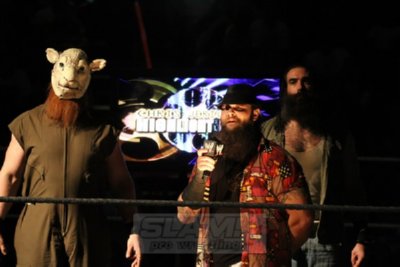
Bray Wyatt in the early days with Erick Rowan, left, and Luke Harper, right. SlamWrestling.net file photo
Even before his transformation, OG Bray lost in feuds with all three members of The Shield, Daniel Bryan (although this happened during the rise of the Yes! Movement and was understandable), John Cena and the Undertaker-the latter two at WrestleManias.
His loss to Cena made sense; to book otherwise would be to allow evil to triumph over good-and not just wrestling evil (we live in a world where heel champs like Roman Reigns and GUNTHER get long title runs with heroes giving chase). Wyatt’s character played with forces that could scare away a segment of the audience-a victory over Cena would send the wrong message to the kiddos at home. Losing to The Undertaker was a grievous missed opportunity. Undertaker had already lost his undefeated streak to Brock Lesnar at the previous year’s WrestleMania and, since his feud with CM Punk two years earlier, had largely stopped being part of the build-up to his matches. Wyatt, like Punk and Lesnar (well, Paul Heyman) before him had to carry the whole feud with their work on the microphone. Had Wyatt been tapped to end the Streak instead of Lesnar the pro wrestling landscape might look a bit different; one supernatural force consuming another in a bid to plunge the WWE into chaos-and setting the stage for a massive feud against the forces of good. Wyatt appealed to the same Creatures of the Night as Undertaker. In many ways he was and still is Taker’s heir apparent-but whereas the former’s legend was cemented by being presented as unbeatable if not invulnerable, Wyatt has consistently shown vulnerability. For all of his talk he lost regularly. Character work and theatricality and merchandise are all important, but it’s safe to say Bray was ultimately squandered in his initial run.
Wyatt’s creepy, supernaturally-inflected heel has the hallmarks of the best villains. His skill on the microphone makes him a sympathetic figure; the audience wants to follow along, as evidenced by the phone flashlights that make up his “fireflies” when he enters a darkened arena, or audience “He’s Got the Whole World” singalongs.
These are organic responses and they’re often my favorite part of whatever show he’s on. If you’ve read a Stephen King novel or ten (clearly Brodie Lee did-as Luke Harper he would yell “My life for you!” which traces back to the Trashcan Man character in King’s Magnum Opus, The Stand, and echoes throughout King’s universe) you know that evil has to be seductive.
Used properly, with a gentle hand on the special effects and an emphasis on in ring victories and outside promos, Wyatt is arguably the best bet to cover the Undertaker’s spot for as long as he’s physically capable and mentally engaged. The two men are very different. Undertaker himself started as a slightly more animated version of wrestling’s attempts to bring zombies and mummies and Yetis to life… but he evolved to a point where performing a sit-up mid match guaranteed a pop. Wyatt took a straw hat and a Max Cady by way of Waylon Mercy outfit and turned it into gold. Instead of the sit-up he does a back bridge. The crowd goes wild. Imagine what would happen if he won more frequently.
As much as Bray Wyatt can add to WWE broadcasts his return marks a significant shift within WWE. When I said at the outset that Wyatt’s return was presaged in many ways, the most significant spoiler came with Vince McMahon’s resignation/retirement on July 22. Wrestling fans were quick to question what would come next for WWE in the wake of his departure-even though he still controls a majority of shares and significant voting power within the company. To their credit, new CEO and co-Chair Stephanie McMahon and Chief Content Officer/Head of Creative Triple H were quick to take the reins and ensure continuity on-screen while, at least so far, charting a new course for storytelling and how talent would be treated.
Wyatt is the latest in a series of wrestlers to return to WWE since Vince stepped down. The line started within a week of Triple H assuming leadership of WWE’s creative operations and began in earnest at this year’s SummerSlam:
B Fab
Ashanti Thee Adonis
Top Dolla
Dakota Kai
Dexter Lumis
Karrion Kross
Scarlett
Johnny Gargano (who was never officially released but did allow his contract to lapse)
Braun Strowman
Candice LaRae
Karl Anderson
Luke Gallows
And of course, Bray Wyatt.
These returning wrestlers could represent a ‘make good’ by Triple H and Stephanie. Plenty of stars were let go in a series of waves at the height of the COVID-19 pandemic. Fans understood the pressures imposed by the pandemic meant a leaner roster featuring the same matches with no crowds or live events to support multiple touring companies, but as Keith Elliott Greenberg notes in his recent book Follow the Buzzards, the releases took place despite record profits for WWE and left performers without promotions, audiences or outlets to make up for lost income. The whole thing left fans with a sour taste in their mouths, especially while competitors like Impact and AEW fell on their swords to keep their existing payroll going when they had no chance of making that money back. Ring of Honor put itself out of business but kept its workers bills paid until the harshest pandemic restrictions were lifted. Many of those who were released by WWE found work elsewhere. Some — like Keith Lee and Swerve Scott — are now locked into longer term contracts with AEW, but over time we may see more back and forth as contracts expire. That would be a great thing for wrestling.
The rumor mill continues to churn regarding other prospective returns. Fan favorite Matt Cardona (the former Zack Ryder) is one name, particularly appealing since he’s shown his own creative streak on the independent scene; and Bo Dallas, who had been out with an injury and would make a logical addition to any storyline involving his brother Bray. The scene set for Wyatt’s return admits more mystery since the Firefly Fun House Gang were all masked. What better way to reintroduce talent to the audience than a progressive or mass unmasking at a key point in a show?
So far most of these returns have ben handled well creatively. Most of the talent cited came back with fuller dance cards than when they left. Kross and Scarlett were thrust into a main-event level feud with Drew McIntyre and figured into his title program with Roman Reigns. The Good Brothers joined fellow Bullet Club member AJ Styles in his feud against Finn Balor and the Judgment Day. Strowman is carving a familiar path of destruction up the card and looks to be programmed into a battle of the big men against Omos. Dakota Kai won the revived women’s tag team championship within weeks of her return, while Hit Row is primed to feud with Legado del Fanstasma. Gargano and LaRae are finding their footing on RAW, which makes sense since part of their appeal comes from being mouthy underdogs. They have probably taken the most losses, but if Gargano is ultimately positioned as a new version of Daniel Bryan early setbacks will help, not hurt. Lumis may have had the most interesting non-Wyatt comeback, introduced peripherally in a series of backstage calamities only to be revealed as The Miz’s stalker (hopefully this angle works better for him than it did Diamond Dallas Page-although I enjoyed his act greatly in NXT).
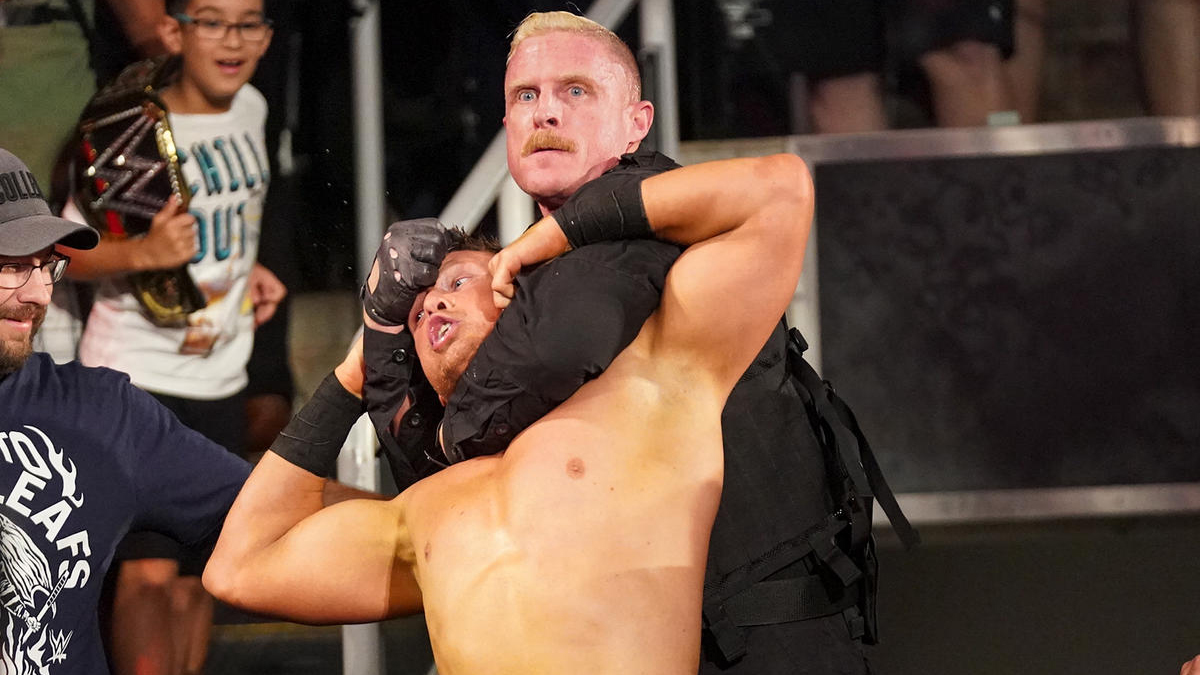
Dexter Lumis seems a little unhinged in his current WWE appearances. WWE photo
Even better, all of these returns acknowledge their performers’ past and exist in continuity with NXT. One of the worst parts of latter-day Vince was how he would take characters that had gotten over organically with the NXT audience and completely recast them, giving them new names or outfits or characters and ignoring what worked within the WWE extended universe on actual WWE TV shows. No wonder Keith Lee and Alastair Black and Karrion Kross’ first main roster runs failed. They were stripped of everything that made them fun to watch. We’ll see about Butch.
NXT may have made the biggest comeback of all, pivoting back to Triple H’s vision of a third brand that attracts a more serious kind of indie-cred wrestler instead of the Jackson Pollock nursery it briefly turned into under Vince and Bruce Prichard.
This spate of returns is even more interesting since it comes in the face of real competition from AEW. In the dying years of McMahon’s leadership a floodgate opened; released wrestlers moved to AEW in droves. But many of those wrestlers seemed to fail to move up the card in their new home, and concerns have emerged about how they are being used no better than in AEW (with a smaller platform) and allegations have been raised about favoritism and infighting among active wrestler/executives. Some talent wants to head back to WWE under the new McMahon-Helmsley Era.
It remains to be seen how meaningful and permanent these changes are. Bringing back so many wrestlers in a fairly short time could be seen as a defensive move, shoring up for a promotional war with AEW — but that hasn’t really happened yet beyond the abortive Dynamite-NXT skirmish a few years ago. Triple H has made his willingness to work with other promotions known, and over the years has encouraged talent to go work elsewhere to develop as performers, a long range view that sees more polished performers return to WWE for main event runs. It worked wonders for Drew McIntyre and Bobby Lashley.
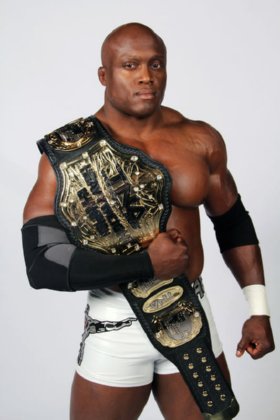
TNA World champion Bobby Lashley.
I hope the trend towards meaningful programs for those who have come back continues although I worry that it could force more established acts out. I also don’t know whether those who have come back have done so to their advantage. Cost-cutting was repeatedly cited when talent was let go. What kind of deals former/future main eventers like Braun Strowman or Wyatt have signed to get back into the WWE fold should factor into our thinking, as should the security of those deals. Karl Anderson and Luke Gallows showed up on Raw a couple of weeks ago. Last time, they were released very shortly after signing lucrative long-term contracts following Triple H’s own advice that AEW would be the less secure option.
Perhaps Triple H understands that healthy competition is always good for wrestling. The goal should never be to put other promotions out of business since they are ultimately the best source of talent for WWE. Triple H was himself a product of Killer Kowalski’s wrestling school and worked briefly for WCW as Terra Ryzing before his aristocratic repackaging in WWE. For all of its myth making, WWE’s previous boom periods were fueled by stars who were created elsewhere but marketed more effectively in McMahon land. Seminal superstar Hulk Hogan was a fully formed act by the time he beat the Iron Sheik. He was raided from Verne Gagne’s AWA. Shawn Michaels was also poached from the AWA and would develop into a main eventer a few years later. Kevin Nash, Scott Hall, Dustin Rhodes and Lex Luger helped carry the WWE into the early-mid 1990s after working for WCW (Hall as the midcard Diamond Studd, Nash as a giant enhancement talent as Oz, Vinnie Vegas and Master Blaster, Rhodes as a bland babyface trading off his father’s name until he reinvented himself in WWE as Goldust).The Attitude Era was built out of WCW’s castoffs: Stone Cold (Stunning) Steve Austin; The Undertaker (Mean Mark Callous); Mankind (Cactus Jack) were its anchors, along with many supporting players. Only The Rock and Kurt Angle could be considered home-grown main eventers (Brock Lesnar and John Cena came later, after WCW folded, as WWE tried and mostly failed to set up an effective farm system).
As much as the recent push to re-sign talent is a ‘feel good’ story, pro wrestling is still big business. Talent needs to produce results and profit. Waves of releases will still happen to boost profitability. Even the best acts eventually get stale and contracts cease to be worthwhile investments. NXT UK was shut down under Triple H and Stephanie’s watch resulting in mass layoffs against a much smaller British wrestling scene. That market has now been flooded with ex-WWE talent, but likely many fewer spots for them to work. WWE has continued its tradition of cherry picking the most promising British wrestlers and will likely fold them into the US version of NXT and its anchor shows over time. In the meantime European fans wait for a retooled version of the developmental show. We’ll see whether it happens…but whoever the folks are in charge, like a certain Quebecois legend would say pro wrestling is a dog-eat-dog world.
TOP PHOTO: Bray Wyatt returns at WWE Extreme Rules. WWE Photo
RELATED LINKS
